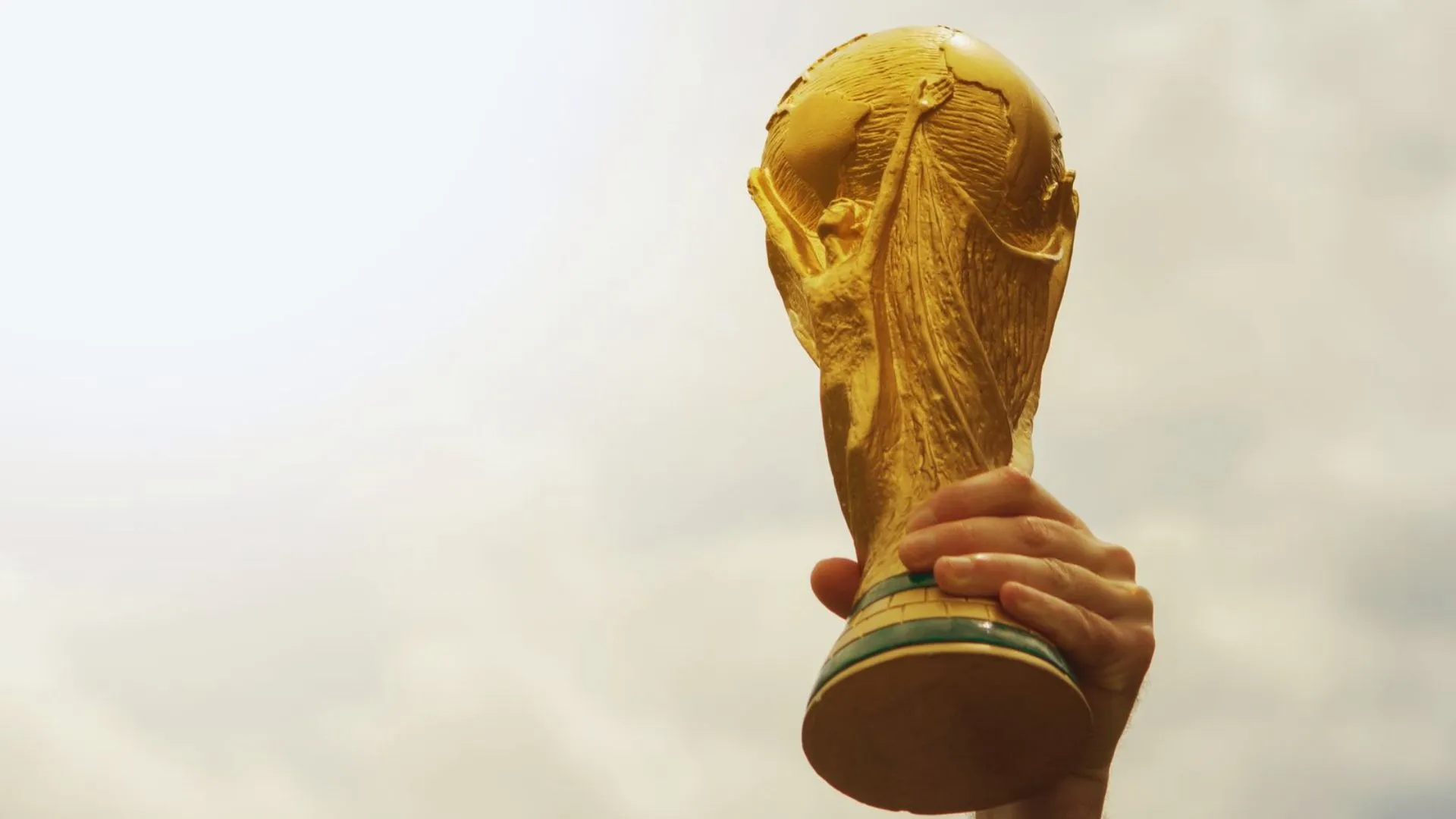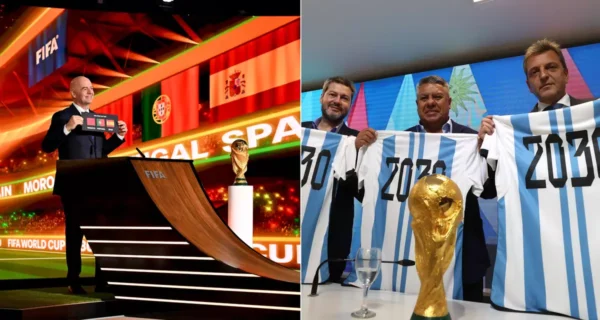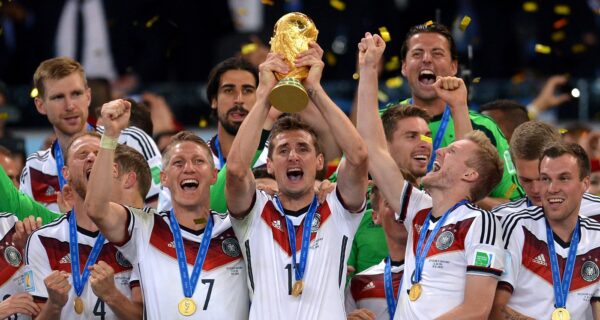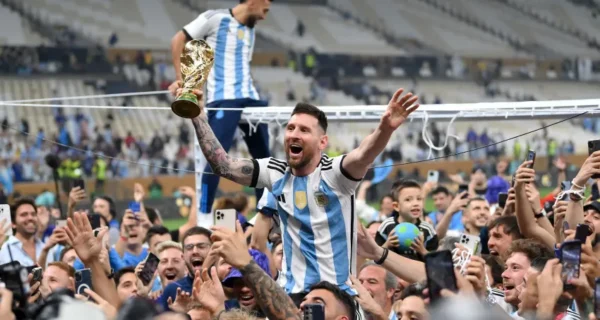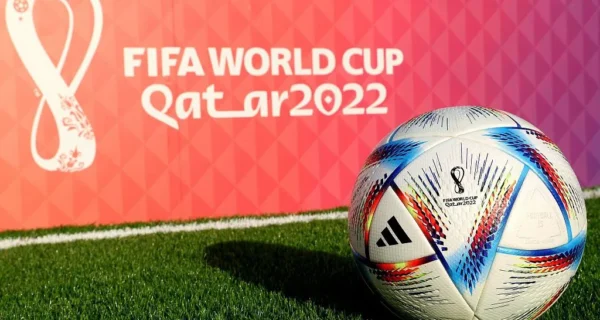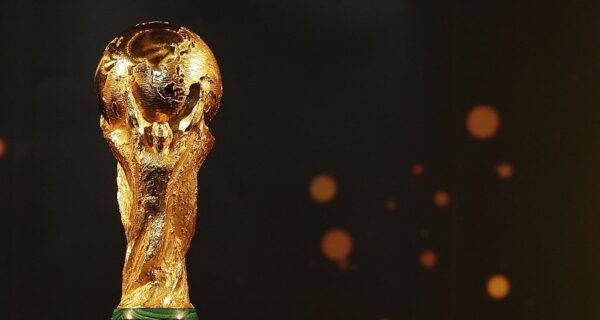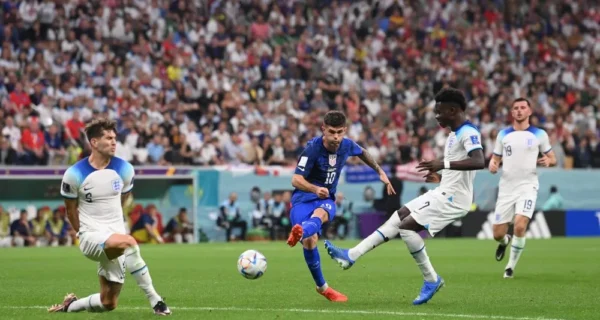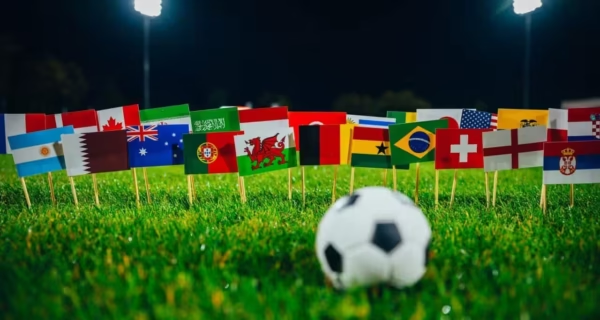This Article Contains
The FIFA World Cup trophy stands as the most coveted prize in international football. Players dream of lifting it, nations celebrate for decades after winning it, and fans recognize its iconic silhouette instantly.
Beyond its sporting significance, this gleaming symbol of football excellence carries a surprising monetary value. The trophy combines precious materials, extraordinary craftsmanship, and historical importance to create a priceless sporting artifact.
The Evolution of Football’s Most Prestigious Trophy
The current FIFA World Cup trophy isn’t the original prize awarded to champions. FIFA first presented the Jules Rimet Trophy at the inaugural tournament in 1930. This golden statuette depicted Nike, the Greek goddess of victory, holding a cup above her head.
After Brazil won their third World Cup in 1970, they earned the right to keep the Jules Rimet Trophy permanently according to the rules at that time. This prompted FIFA to commission a replacement for the 1974 tournament hosted by West Germany.
The Jules Rimet Trophy faced security challenges throughout its existence. Thieves stole it in 1966 before the World Cup in England, though a dog named Pickles famously discovered it wrapped in newspaper in a London park. Criminals stole it again in 1983 in Brazil, and authorities never recovered it, likely melting it down for its gold content.
The Making of an Icon: Materials and Measurements
The current FIFA World Cup Trophy consists of 18-karat gold (75% pure gold) with two bands of malachite stone adorning its base. This combination creates the trophy’s distinctive golden glow with elegant green accents.
Many people mistakenly believe the trophy contains solid gold throughout. In reality, the trophy features a hollow interior. The total weight reaches 6.175 kilograms (13.61 pounds), containing about 4,927 grams of pure gold.
The trophy measures 36.8 centimeters (14.5 inches) tall with a width of 12.5 centimeters (5.1 inches). These dimensions make it slightly larger than its predecessor, the Jules Rimet Trophy, which stood 35 centimeters high.
The Artistic Vision Behind the Trophy
Italian sculptor Silvio Gazzaniga designed the current trophy after FIFA selected his proposal from 53 submissions. Gazzaniga worked with the Stabilimento Artistico Bertoni company in Milan to create the final piece.
The design depicts two human figures triumphantly holding up the Earth, symbolizing the global nature of the tournament. This artistic representation captures the joy and exultation athletes experience when achieving victory on the world stage.
Gazzaniga’s success with the World Cup trophy led him to design other prestigious sporting awards. He later created both the UEFA Cup and UEFA Super Cup trophies, establishing himself as a master of sporting iconography.
The Original Cost vs. Present-Day Production Value
When FIFA commissioned the trophy for the 1974 World Cup, the original manufacturing cost reached approximately $50,000. This sum covered the expensive materials, detailed craftsmanship, and artistic design.
The production cost has increased substantially since then. Current estimates suggest manufacturing the same trophy today would cost around $242,700, reflecting increases in gold prices and craftsman expertise.
These figures represent only the basic production expenses. They don’t account for the trophy’s historical significance, cultural importance, or status in the sporting world.
The True Monetary Value of Football’s Ultimate Prize
Gold Content Value
Based on the trophy’s gold content alone, its material value impresses most people. With 4,927 grams of pure gold, the precious metal content alone carries a value between $161,000 and $250,000, depending on current gold prices.
The malachite base adds minimal financial value compared to the gold. However, this semi-precious green stone enhances the trophy’s aesthetic appeal and provides a striking visual contrast to the golden cup.
Total Estimated Value
The total value far exceeds its material components. Insurance valuations and auction estimates place the FIFA World Cup Trophy’s worth at approximately $20 million, making it the most expensive sporting trophy in the world.
This valuation reflects not just the gold content but also the trophy’s unique design, cultural significance, and historical importance in global sports. The trophy’s status as a one-of-a-kind artifact contributes significantly to its extraordinary value.
Comparison to Other Valuable Sports Trophies
No other sporting trophy approaches the FIFA World Cup Trophy in value. The second most expensive sports trophy, the Woodlawn Vase presented at the Preakness Stakes horse race, carries an estimated value of $2.5 million – just a fraction of the World Cup Trophy’s worth.
The Olympic gold medals, despite their prestigious status, contain only about 6 grams of gold plated over 550 grams of silver. Their material value reaches only a few thousand dollars, though their symbolic value proves immeasurable to athletes.
What Happens to the Trophy After the Final Whistle?
FIFA’s Safekeeping of the Original
The original trophy never becomes permanent property of winning nations. FIFA keeps the authentic trophy in its World Football Museum in Zurich, Switzerland, where sophisticated security systems protect it.
Only a select few individuals may touch the trophy with bare hands. This exclusive group includes players who won the competition, heads of state, and certain FIFA officials, adding to the trophy’s mystique.
The Winners’ Replicas
FIFA presents the winning team with a gold-plated bronze replica to keep permanently. These high-quality reproductions allow nations to display their achievement without risking the original trophy’s safety.
The FIFA rules changed after Brazil won permanent possession of the Jules Rimet Trophy. Today, no team can permanently claim the original trophy regardless of how many times they win the tournament.
The Engraving Tradition
After each World Cup final, FIFA engraves the champion’s name on the trophy’s base. The current design allows space for 17 inscriptions – enough to last until the 2038 World Cup.
This engraving tradition adds personal history to the trophy. Each tournament winner becomes permanently connected to the trophy’s legacy, even when the physical object returns to FIFA’s possession.
Beyond Price: The Immeasurable Value of Glory
The trophy’s true worth transcends its monetary value. For players, lifting the 6.175-kilogram prize represents the culmination of lifelong dreams and countless sacrifices made throughout their careers.
For nations, a World Cup victory creates generations of joy and national pride. Consider Argentina’s celebration after their 2022 victory or the lasting impact of England’s sole triumph in 1966.
For fans worldwide, the trophy symbolizes the beautiful game’s highest achievement. It represents excellence, determination, and the ability of sport to unite people across cultural and geographical boundaries.
FAQs
1. Is the FIFA World Cup trophy made of solid gold?
No, the trophy isn’t solid gold throughout. It consists of 18-karat gold (75% gold) with a hollow interior. The trophy contains approximately 4,927 grams of pure gold, making it extremely valuable but not completely solid gold as many believe.
2. How much does the FIFA World Cup trophy weigh?
The FIFA World Cup trophy weighs 6.175 kilograms (13.61 pounds). This weight makes it substantial enough to feel significant when lifted but light enough for players to raise triumphantly above their heads during celebrations.
3. Who designed the current FIFA World Cup trophy?
Italian sculptor Silvio Gazzaniga designed the current trophy. FIFA selected his design from 53 submissions in 1974. Gazzaniga worked with the Italian trophy manufacturer Stabilimento Artistico Bertoni to create the iconic prize.
4. Do winning teams get to keep the original World Cup trophy?
No, winning teams don’t keep the original trophy. FIFA retains the authentic trophy in their museum in Zurich. The champions receive a gold-plated bronze replica to keep permanently, unlike the pre-1970 era when Brazil earned permanent possession of the Jules Rimet Trophy.
5. How much gold is in the FIFA World Cup trophy?
The trophy contains approximately 4,927 grams of pure gold as part of its 18-karat gold composition. This significant amount of precious metal contributes substantially to the trophy’s material value of approximately $250,000.
6. What happened to the original Jules Rimet Trophy?
The original Jules Rimet Trophy experienced an unfortunate fate. After Brazil won permanent possession in 1970, thieves stole it from the Brazilian Football Confederation headquarters in 1983. Authorities never recovered it, and many believe criminals melted it down for its gold content.
7. How much is the FIFA World Cup trophy worth in gold?
The gold content of the FIFA World Cup trophy holds a value between $161,000 and $250,000, depending on current market rates. This material value represents only a fraction of the trophy’s total estimated worth of $20 million.
8. What is the most expensive sports trophy in the world?
The FIFA World Cup Trophy ranks as the most expensive sports trophy globally, valued at approximately $20 million. This valuation far exceeds other prestigious prizes like the Woodlawn Vase ($2.5 million) awarded in horse racing’s Preakness Stakes.
9. What does the FIFA World Cup trophy design represent?
The trophy depicts two human figures joyfully holding up the Earth. This design symbolizes the global nature of football and represents the exultation athletes experience at the moment of victory. The figures stand on a base adorned with malachite bands.
10. Where is the original FIFA World Cup trophy kept?
FIFA keeps the original trophy at the FIFA World Football Museum in Zurich, Switzerland. The museum employs one of Switzerland’s most sophisticated security systems to protect this valuable sporting artifact, removing it only for specific official occasions.

